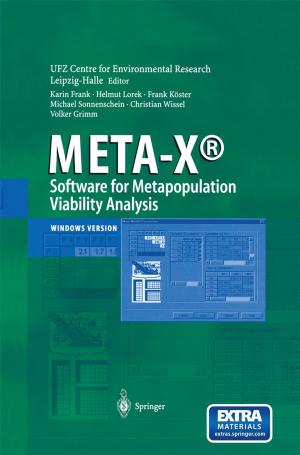Microsimulation Modelling of the Corporate Firm
Exploring Micro-Macro Economic Relations
Business & Finance, Management & Leadership, Management Science, Economics, Theory of Economics| Author: | Frank W. van Tongeren | ISBN: | 9783642520686 |
| Publisher: | Springer Berlin Heidelberg | Publication: | March 9, 2013 |
| Imprint: | Springer | Language: | English |
| Author: | Frank W. van Tongeren |
| ISBN: | 9783642520686 |
| Publisher: | Springer Berlin Heidelberg |
| Publication: | March 9, 2013 |
| Imprint: | Springer |
| Language: | English |
My interest in microsimulation started to develop when I was exposed to the works of Guy Orcutt and his associates on microsimulation of households in the USA, and those of Gunnar Eliasson and his associates on simulatio~ of Swedish firms. Their approaches promised the exciting possibility to represent an by simulating the behaviour of individual microeconomic entire economic system units on a computer. The construction of a large scale microsimulation model seemed to be a worthwhile adventure which could yield much more detailed results than existing models. It was also evident that microsimulation of firms is a relatively underdeveloped area, in spite of the large number of operational microsimulation models of households in the USA and Europe. Developing the computer implementation has been an integral part of the research. Translating initially vague ideas into mathematical formulae and subsequently into a structured computer language provides a testing ground for 10Bical consistency of ideas. When writing this book I have purposefully abstained from describing the computer program and dedicated solution algorithms. The reason is that the book is primarily directed towards readers interested in economics and therefore uses the language of economics and not that of computer science. The simulation model has been programmed for the personal computer in Turbo Pascal. Sophisticated memory management techniques have lifted constraints on the number of firms which can be simulated on the PC.
My interest in microsimulation started to develop when I was exposed to the works of Guy Orcutt and his associates on microsimulation of households in the USA, and those of Gunnar Eliasson and his associates on simulatio~ of Swedish firms. Their approaches promised the exciting possibility to represent an by simulating the behaviour of individual microeconomic entire economic system units on a computer. The construction of a large scale microsimulation model seemed to be a worthwhile adventure which could yield much more detailed results than existing models. It was also evident that microsimulation of firms is a relatively underdeveloped area, in spite of the large number of operational microsimulation models of households in the USA and Europe. Developing the computer implementation has been an integral part of the research. Translating initially vague ideas into mathematical formulae and subsequently into a structured computer language provides a testing ground for 10Bical consistency of ideas. When writing this book I have purposefully abstained from describing the computer program and dedicated solution algorithms. The reason is that the book is primarily directed towards readers interested in economics and therefore uses the language of economics and not that of computer science. The simulation model has been programmed for the personal computer in Turbo Pascal. Sophisticated memory management techniques have lifted constraints on the number of firms which can be simulated on the PC.















